In the intricate world of medical billing, the claim submission process in medical billing stands as the backbone of financial success for healthcare providers and wholesalers alike. It’s the critical bridge between delivering patient care and securing claim reimbursement—a process that, when done right, keeps the revenue cycle management humming like a well-oiled machine.
But when it goes wrong? It’s a bit like trying to herd cats while riding a unicycle and juggling flaming torches—challenging, to say the least.
This comprehensive guide will walk you through every step of the claim submission process in medical billing, offering insider tips, eye-opening stats, and a dash of humor to keep things lively. Whether you’re a medical billing wholesaler streamlining the medical billing process for multiple providers or a healthcare practice looking to optimize your workflow, this step-by-step breakdown has you covered.
What Is the Claim Submission Process in Medical Billing?
At its core, the claim submission process in medical billing is the act of preparing and sending a detailed request—known as a claim—to an insurance payer or government program (like Medicare or Medicaid) for reimbursement of services provided to a patient. Think of it as the healthcare equivalent of sending an invoice, except this invoice comes with a labyrinth of codes, strict deadlines, and enough red tape to make a bureaucrat blush.
A claim includes essential details like patient information, provider credentials, diagnosis and procedure codes, and supporting documentation. It’s the ticket to achieving billing accuracy and getting paid, and for medical billing wholesalers—who often manage claims for multiple healthcare entities—it’s a high-stakes game of precision and efficiency.
According to the Healthcare Billing and Management Association, approximately 30% of insurance claims are denied on the first submission. That’s right—nearly one in three claims gets a big fat “nope” from payers due to claim denials. For wholesalers, mastering this process isn’t just about securing claim reimbursement; it’s about keeping clients happy and cash flowing.
Why the Claim Submission Process Matters
Before we dive into the nitty-gritty, let’s talk about why this process is a big deal. Timely and accurate claim submissions ensure healthcare providers—and by extension, the wholesalers supporting them—get reimbursed promptly.
Delays or errors can lead to cash flow hiccups, frustrated clients, and a whole lot of unnecessary paperwork, disrupting revenue cycle management. Poor billing practices cost U.S. doctors a staggering $125 billion annually—that’s roughly $5 million per provider!
One industry insider put it best: “In medical billing, a claim is like a stand-up comedian—if it doesn’t land right the first time, you’re stuck rewriting the punchline.” For wholesalers, submitting clean claims (error-free submissions) is the key to avoiding the comedy of errors that comes with claim denials and resubmissions.
Step-by-Step Guide to the Claim Submission Process in Medical Billing
Ready to master the claim submission process in medical billing? Here’s a detailed roadmap to guide you through each stage, packed with practical insights and a sprinkle of industry insights to boost billing accuracy.
Step 1: Gather Patient and Provider Information
The journey begins with collecting the essentials for the medical billing process. This includes patient details like full name, date of birth, insurance ID, policy number, and contact info; provider details such as name, National Provider Identifier (NPI), Tax Identification Number (TIN), and practice address; and service details including dates and location of service (e.g., hospital, clinic, or outpatient facility).
Accuracy here is non-negotiable. A typo in a patient’s insurance ID could send your claim straight to the rejection pile, delaying claim reimbursement. For wholesalers, this step often involves syncing data from multiple providers, making standardized intake forms or software a lifesaver. Double-check insurance eligibility before proceeding—a lapsed policy is a fast track to claim denials.
Step 2: Assign Diagnosis and Procedure Codes
Next up: translating the medical encounter into a language payers understand—codes. This is where medical coders work their magic to ensure billing accuracy. Diagnosis codes (ICD-10) describe the patient’s condition (e.g., J45.909 for uncomplicated asthma), while procedure codes (CPT or HCPCS) detail the services provided (e.g., 99213 for a standard office visit).
Coding errors are a top reason for claim denials, with 32% of rejections tied to coding issues according to Healthcare Finance News. For wholesalers, investing in certified coders or advanced billing software can slash these mistakes and improve revenue cycle management. As one biller quipped, “Coding is like trying to explain your grandma’s secret recipe to a robot—one wrong ingredient, and the whole dish is toast!”
Step 3: Compile Supporting Documentation
Payers don’t just take your word for it—they want proof. Attach medical records, test results, or referral forms to justify the services billed. This step is crucial for demonstrating medical necessity, a common sticking point in the medical billing process.
For wholesalers managing high volumes, organizing this documentation digitally can streamline claim reimbursement. After all, no one wants to dig through a mountain of paper when a payer comes knocking. It’s worth noting that resubmitting a denied claim costs an average of $25, per the MGMA—proper documentation upfront saves time and money.
Step 4: Scrub and Prepare the Claim
Before hitting “submit,” give your claim a thorough once-over—or better yet, let technology do it. Claim scrubbing involves checking for errors like missing codes, incorrect patient data, or billing inconsistencies. Many wholesalers rely on clearinghouses—third-party services that reformat and validate claims—to ensure compliance with payer rules and enhance billing accuracy.
Think of scrubbing as the dress rehearsal before the big show. A clean claim has a higher chance of sailing through adjudication (the payer’s review process) without a hitch. Electronic Data Interchange (EDI) systems can automate this step, reducing manual errors and speeding up the claim submission process in medical billing.
Step 5: Submit the Claim
It’s go time! Submit the claim to the payer, typically electronically via a clearinghouse or directly to high-volume payers like Medicare. Some smaller insurers may still accept paper claims, but electronic submission is the gold standard—faster, cheaper, and less prone to loss in the mail, ensuring smoother revenue cycle management.
For wholesalers, batch processing claims from multiple providers can optimize efficiency. Just be sure to track submission dates—late claims are a one-way ticket to Denialville. Becker’s Hospital Review reveals that 80% of medical bills in the U.S. contain errors—precision at this stage is your best defense against claim denials.
Step 6: Follow Up and Monitor
Submission isn’t the finish line—it’s the starting gun for follow-up. Track the claim’s status to ensure it’s processed and paid, a critical part of the medical billing process. If it’s denied or rejected, investigate the reason (e.g., coding error, lack of pre-authorization), fix it, and resubmit.
Wholesalers often provide this service as a value-add, sparing providers the headache of chasing down claim reimbursement. Tools like real-time claim tracking dashboards can make this step a breeze. One billing specialist summed it up nicely: “Following up on claims is like playing hide-and-seek with a toddler—they’re sneaky, but you’ll find them eventually!”
Challenges in the Claim Submission Process

Even with a solid process, pitfalls abound. Common hurdles include claim denials, with 30% of first submissions rejected, often due to clerical errors or missing info; fraud prevention, where payers scrutinize claims for signs of abuse, adding complexity to billing accuracy; and deadlines, where late submissions can forfeit reimbursement entirely, disrupting revenue cycle management.
For wholesalers, juggling diverse payer requirements across multiple clients amplifies these challenges. Staying ahead requires robust systems, ongoing training, and a keen eye for detail.
Claim Submission Tips from Medical Billing Wholesalers
As a wholesaler, your role is to make the claim submission process in medical billing seamless for your clients. Here’s how to shine: Leverage billing software with built-in scrubbing and analytics to catch errors early and reduce claim denials. Educate clients by training providers on proper documentation and coding to streamline the medical billing process and improve claim reimbursement. Offer transparency by providing clients with regular reports on claim status and payment trends to enhance trust and revenue cycle management.
Conclusion
The claim submission process in medical billing is equal parts art and science—a delicate dance of data, deadlines, and determination. For medical billing wholesalers, mastering this process isn’t just a service; it’s a competitive edge. By following these steps—gathering accurate info, coding precisely, scrubbing diligently, and following up relentlessly—you can turn claims into cash with minimal drama, ensuring billing accuracy and timely claim reimbursement.
So, next time you’re knee-deep in claims, remember: “Billing isn’t brain surgery, but it sure feels like it sometimes!” With this guide in hand, you’re ready to tackle the medical billing process like a pro—and keep the revenue flowing for your client


